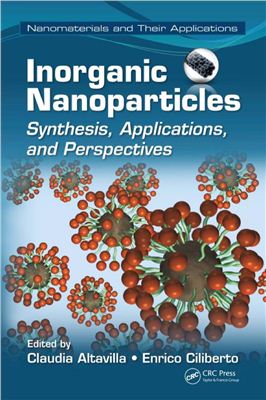CRC Press, 2011. - 566 p. - Among the various nanomaterials,
inorganic nanoparticles are extremely important in mode
technologies. They can be easily and cheaply synthesized and mass
produced, and for this reason, they can also be more readily
integrated into applications. The book’s contributors address the
growing global interest in the application of inorganic
nanoparticles in various technological sectors. Discussing advances
in materials, device fabrication, and large-scale production — all
of which are urgently required to reduce global energy demands —
they cover innovations in areas such as solid-state lighting,
detailing how it still offers higher efficiency but higher costs,
compared to conventional lighting. They also address the impact of
nanotechnology in the biomedical field, focusing on topics such as
quantum dots for bioimaging, nanoparticle-based cancer therapy,
drug delivery, antibacterial agents, and more. Fills the
informational gap on the wide range of applications for inorganic
nanoparticles in areas including biomedicine, electronics, storage
media, conservation of cultural heritage, optics, textiles, and
cosmetics. Assembling work from an array of experts at the top of
their respective fields, this book delivers a useful analysis of
the vast scope of existing and potential applications for inorganic
nanoparticles. Versatile as either a professional research resource
or textbook, this effective tool elucidates fundamentals and
current advances associated with design, characterization, and
application development of this promising and ever-evolving
device.
Inorganic Nanoparticles: Synthesis, Applications, and Perspectives presents an overview of these special materials and explores the myriad ways in which they are used. It addresses a wide range of topics, including:
* Application of nanoparticles in magnetic storage media.
* Use of metal and oxide nanoparticles to improve performance of oxide thin films as conducting media in commercial gas and vapor sensors.
* Advances in semiconductors for light-emitting devices and other areas related to the energy sector, such as solar energy and energy storage devices (fuel cells, rechargeable batteries, etc.).
* The expanding role of nanosized particles in the field of catalysis, art conservation, and biomedicine.
Inorganic Nanoparticles: Synthesis, Applications, and Perspectives presents an overview of these special materials and explores the myriad ways in which they are used. It addresses a wide range of topics, including:
* Application of nanoparticles in magnetic storage media.
* Use of metal and oxide nanoparticles to improve performance of oxide thin films as conducting media in commercial gas and vapor sensors.
* Advances in semiconductors for light-emitting devices and other areas related to the energy sector, such as solar energy and energy storage devices (fuel cells, rechargeable batteries, etc.).
* The expanding role of nanosized particles in the field of catalysis, art conservation, and biomedicine.

